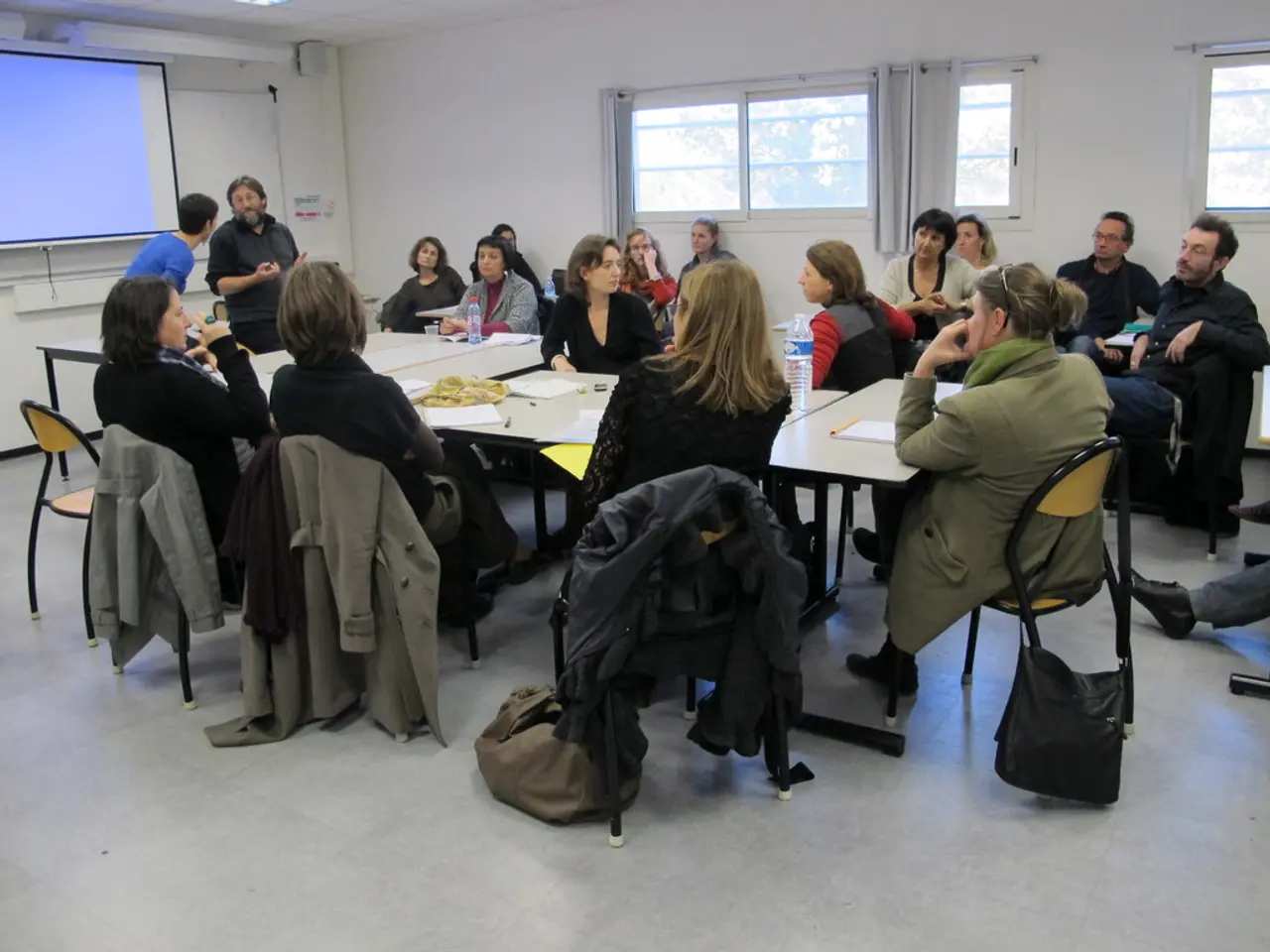Manipulative Statements Used to Perplex and Dominate
In today's world, it's essential to be aware of gaslighting, a form of psychological manipulation that can have severe consequences on a person's mental and emotional well-being. Gaslighting seeks to undermine someone's perception of reality, memory, or sanity, often through subtle or overt tactics.
Gaslighting can manifest in various contexts, such as romantic relationships, workplaces, and families. Common phrases associated with gaslighting include trivialising, denying, stonewalling, countering, and blame-shifting. These phrases are designed to create doubt and confusion, making the victim question their own perceptions and memories.
In romantic relationships, gaslighting phrases often aim to minimise the significance of a partner's feelings or concerns. For example, "You need to calm down. This is not worth getting upset over" or "Why are you making such a big deal out of this? You are always overreacting."
At work, gaslighting can involve questioning a person's memory, perception, and sanity, creating a toxic environment and negatively impacting employees' well-being and productivity. Examples of gaslighting in the workplace include "You are too sensitive. You need to toughen up if you want to work here" or "Calm down. It's just a part of the job."
Gaslighting in families can take the form of trivialising, stonewalling, countering, blocking, denying, and blame-shifting. For instance, "How are you going to handle the real world? You are too sensitive" or "I don't want to hear any more of your complaints. Keep it to yourself."
Adult children can also gaslight their parents, often if they had witnessed this behaviour growing up. An example of this is "It never happened that way" or "I never said that. You must have misunderstood me."
It's important to note that gaslighting can sometimes occur unintentionally, but often involves a person purposefully manipulating another to create doubt and confusion.
Recognising such phrases and behaviours is critical for those experiencing gaslighting. Being aware of these manifestations allows targets to more effectively respond and seek support to maintain their psychological safety and professional integrity.
Here are key ways gaslighting phrases appear in the workplace:
1. Trivialising experiences or feelings: A gaslighter may dismiss or minimise an employee’s concerns or complaints, making them feel like their reactions are exaggerated or invalid. 2. Denying events or facts: When confronted, gaslighters might outright deny things that occurred, causing the target to question their own memory or understanding. 3. Avoiding accountability: Gaslighters refuse to own up to mistakes or offensive actions, instead shifting blame onto the victim or others. 4. Manipulating narratives: They often rewrite realities by providing false explanations or excuses that cast the victim as problematic or unreasonable. 5. Withholding information or support: Another gaslighting tactic in the workplace is withholding crucial information, feedback, or resources, thereby undermining the employee's ability to perform effectively and fostering self-doubt.
Recognising gaslighting is the first step towards protecting oneself from its harmful effects. If you believe you are a victim of gaslighting, it's crucial to seek support from trusted friends, family, or mental health professionals.
[1] Psychology Today. (2021). What Is Gaslighting? [online] Available at: https://www.psychologytoday.com/us/basics/gaslighting [2] Mayo Clinic. (2021). Gaslighting. [online] Available at: https://www.mayoclinic.org/healthy-lifestyle/adult-health/in-depth/gaslighting/art-20138845 [3] Healthline. (2021). Gaslighting: Signs, Effects, and How to Stop It. [online] Available at: https://www.healthline.com/health/gaslighting [4] Verywell Mind. (2021). Gaslighting: Definition, Examples, and Effects. [online] Available at: https://www.verywellmind.com/what-is-gaslighting-4174696 [5] Forbes. (2021). Gaslighting: How It Happens In The Workplace And How To Stop It. [online] Available at: https://www.forbes.com/sites/forbescoachescouncil/2020/04/23/gaslighting-how-it-happens-in-the-workplace-and-how-to-stop-it/?sh=5314c0d65104
- Understanding gaslighting is crucial in today's world, as it is a form of psychological manipulation that can impact one's mind, emotions, and memory.
- Gaslighting can occur in diverse contexts like relationships, workplaces, and families, employing tactics such as trivialising, denying, stonewalling, and blame-shifting.
- In romantic relationships, gaslighting may downplay a partner's feelings or concerns, causing confusion and doubt.
- Workplace gaslighting can jeopardize employees' mental health and productivity by creating a toxic environment through tactics like denying events, avoidance of accountability, and withholding information.
- Families often see gaslighting as trivialising, stonewalling, countering, blocking, and blame-shifting, which can be especially damaging for children and adult children.
- Unintentional gaslighting can sometimes occur, but it usually involves a deliberate attempt to create doubt and confusion.
- To protect oneself, it's essential to recognize gaslighting phrases and behaviors, enabling targets to respond effectively and seek support for maintaining their psychological safety.
- Key signs of gaslighting in the workplace include trivialising experiences or feelings, denying events, avoidance of accountability, manipulating narratives, and withholding information or support.
- Seeking help from trusted friends, family, or mental health professionals is crucial for victims of gaslighting, with various resources available online such as Psychology Today, Mayo Clinic, Healthline, Verywell Mind, and Forbes.




